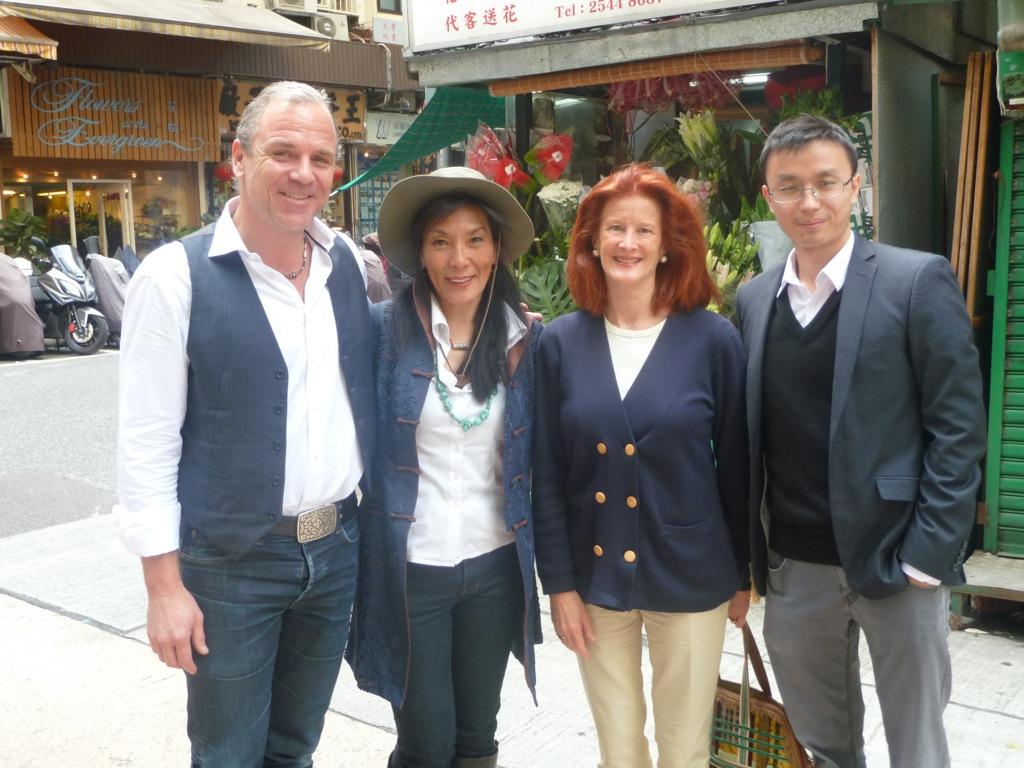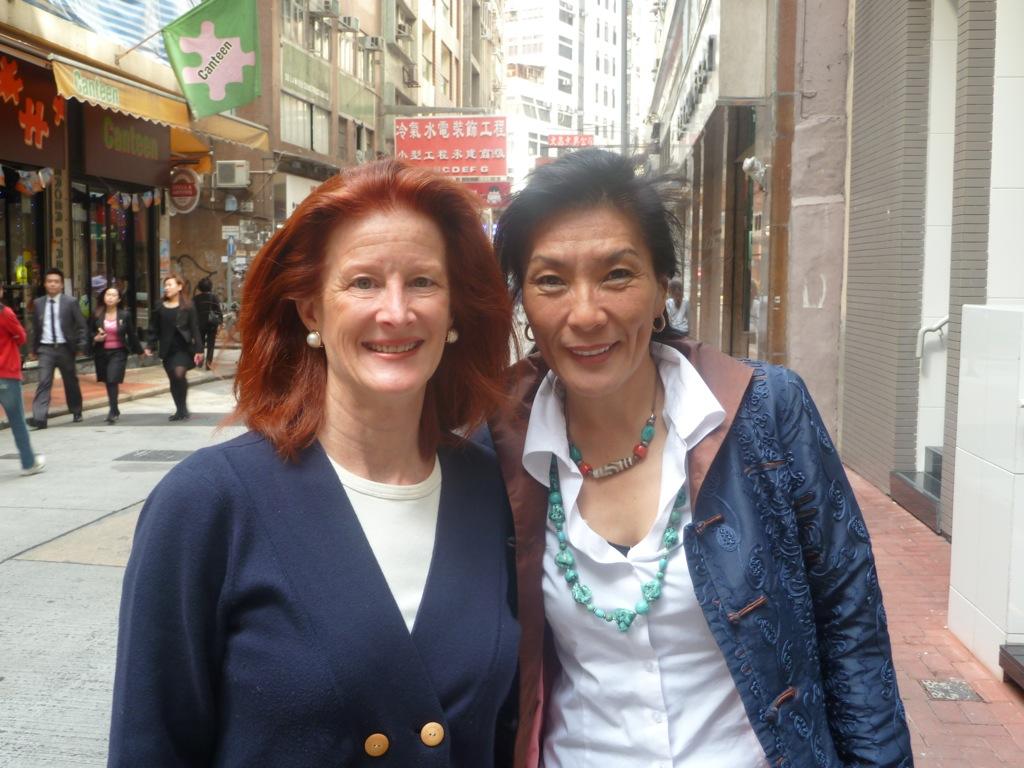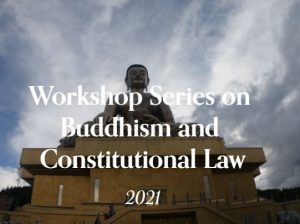My old lecturer at the School of Oriental and African Studies in London once said to me, “Creativity is anathema to Tibetan art.” This is not an uncommon argument among scholars. Of course, my teacher had in mind the painstakingly planned and transmitted manuals of thangka painters. The artist of a thangka is and must be, corseted by the rules of Tibetan art. The position of a bodhisattva’s finger must fit a precise height, length, width, and pose. Her smile cannot breach any of the given dimensions, because to apply even a nano-hint of personal preference or artistic creativity is to doom the thangka’s spiritual efficacy. This severity reflects the one sole purpose Tibetan art is traditionally used for: to facilitate inner awakening within practitioners and devotees.
Music has spiritual as well as aesthetic power. But the truth is that enlightening art and pleasurable art are not mutually exclusive, as Dechen Shak-Dagsay has proved many times before on her world tours, from Carnegie Hall to South Korea and the Kee Club in Hong Kong. She revisits this theme again in her album “Jewel”, and demonstrates once and for all that making mantra music doesn’t mean shunning originality, and exploring new soundscapes doesn’t mean abandoning Tibetan values. In fact, all her tracks involve central figures in the Tibetan Buddhist tradition, from Amitabha Buddha to Tara to Padmasambhava. The mantras of these deities are not “blocked out” by any of the modern acoustics or ambience employed by her producer, Helge van Dyk. As of current, van Dyk is one in a line of producers at the acclaimed studio Van Dyk Music in Switzerland.
As a daughter of the illustrious Dagsay Tulku Rinpoche, Dechen told me that one of her proudest moments is when her music can help others to feel that they are good people. That inner feeling of goodness is not a false sense of security, an aural serving of self-help. It is the inner cry that comes from within each sentient being: the call of Buddha Nature. If all beings share this capacity to be enlightened, then convincing others about their goodness is not sentimental by any stretch. It is a reminder of their personal capacities and capability to rise to the challenge that the Three Poisons of greed, hatred, and delusion pose to us. From the technical perspective, Van Dyk Music studios’ method of “Kreativeway” mixed the album on an SSL Board, mastering it with loudspeakers from GIYA 1. With a soft synthesizer called Omnisphere, “Jewel” primarily combines traditional Indian percussion and Western classical instruments. They include finger-cymbals, the Tibetan prayer drum, a Steinway Grand Piano, the shakuhachi (a Japanese end-blown flute) and Tibetan guitar, but also electronic and acoustic guitars and cellos.
Dechen is one amongst a growing number of artists who can craft a thoroughly modern collection of spiritual songs whilst keeping faithful to the Tibetan tradition of mantras and Buddhist chanting. So is it still tempting for us to caricature Tibetan art as despising creativity, that the latter is the anathema of the former? I think it’s an outdated, outmoded question, perhaps even the wrong one to ask – even if it began
as a strictly academic query. It might be fairer to just ask whether mantras sound nice with contemporary instruments and synthesizers. Thanks to Dechen we have a glimpse of the answer – it simply sounds liberating.
Full track list
1. “Jewel” Prologue 3:46 – The Prologue opens with a salutation to the Triple Gem, with sitars invoking the Indic heritage, from which all Buddhist traditions draw their revelation. While Tibetan Buddhism developed its distinct flavour and schools, it has always looked to India as the heartland of its inheritance. Tantric Buddhism was transmitted from India to Tibet by a series of masters and translators, all of whom remain folk heroes in modern Tibetan literature, poetry, song, and dance.
2. Medicine Buddha 9:09 – The Medicine Buddha of lapis lazuli, Bhaishajyaguru, is second only to Amit?bha Buddha in popularity. He is the buddha of the eastern paradise, where his salvific power is expressed in terms of a doctor healing the illnesses of sentient beings. He is the curer to our inner as well as our physical suffering and impurity.
3. Praising Tara 6:53 – Tara is the most popular of all goddesses in Tibet. She was a princess called Jhanacandra in a past life, but not only vowed to be reborn in a woman’s body, but to be the first female Buddha. She achieved her vow and became the female personification of compassion and wisdom.
4. 100 Syllable Mantra of Vajra Sattva 7:18 – “100 Syllable Mantra of Vajra Sattva” is an upbeat medley uniting a gentle chant with a melodious, high-pitched eulogy. This Mantra consists of exactly 100 Mantra Syllables and is known as the purification Mantra of Buddha Vajrasattva. Buddhist Practitioners recite this 100 Syllable Mantra 100,000 times as part of their preliminary practices. It is the most powerful mantra for purifying the impure mind and actions of all living beings.
5. Vajra Guru 8:06 – Ambience and mood set “Vajra Guru” as a gatha (verse) of particular poignancy. Vajra Guru refers to no one else but Padmasambhava, the most famous tantric hero in Tibet. He was invited into the Tibetan Empire to subdue the demons resisting the propagation of Buddhism and became the protagonist of many adventures. His legacy is hard to overstate: the entire terma or “hidden treasure” tradition is built around his mythic figure. These scriptures or teachings are believed to have been hidden by Padmasambhava in secret locations, and only the worthy can discover them when the conditions are right for the teachings to be revealed.
6. Heart Sutra 6:28 – The famous Heart Sutra is a central text in not only Tibetan Buddhism but also the whole of Mahayana Buddhism. The Heart Sutra is one of the earliest Mahayana texts that spread across Asia, a profound scripture of immense philosophical importance for devotees and practitioners. Its most famous verse is perhaps the most often quoted in Mahayana schools: “form is emptiness, emptiness is form.”
7. Tara 9:28 – Another song praising Tara, who comes in many different forms. The two most popular are Green and White, which represent different aspects of her saving power. The Green Tara is the manifestation of the ultimate wisdom of all Buddhas. She is also called the Swift Liberator as she is able to free us from dangers and all our fears. Her green color symbolizes her manifestation of the purified wind element of all the Buddhas and her ability to quickly respond to help the beings. The White Tara has the function to bestow long life, wisdom and good fortune.
8. Amidaba 9:01 – Amitabha is the Buddha of the west, the beloved creator of the Pure Land sukhavati. He made forty-eight vows that sentient beings could trust in him to deliver, should they recite his name. One of these vows was to welcome the deceased to be reborn in his paradise, where one can practice the Dharma free from the corrupting distractions of samsara. In Tibetan Buddhism, he is depicted as a red buddha residing in the western direction.
9. Chenresi 9:30 – This Mantra is one of the most practiced in the world. It is being recited millionfold by the Tibetans and Practitioners all over the world and is dedicated to Buddha Avalokitesvara, the Buddha of Compassion. The mantra has six syllables OM MA NI PE ME HUM and is has the power to increase our own compassion towards all beings. It is deeply connected with the following wish: May all beings no matter what their nature, be free from suffering. May all beings, no matter what their nature be blessed with happiness.
10. “Jewel” Taking Refuge in the Three Jewels 8:43 – The album concludes by coming full circle with a soaring serenade to the Triple Gem. The Triple Gem is the ultimate refuge for the Buddhist community and forms the most basic of Buddhist affirmations: “I take refuge in the Buddha, Dharma, and Sangha.” It is the chant we intone when we become Buddhists, and the same song we hope to bid farewell to the world with on our deathbeds. This song is a fine tribute to the things that Buddhists hold closest to their hearts, and a fitting closing for Dechen’s album.
Jewel: Joyful Heart through Precious Tibetan Mantras, 2011. Dechen Shak-Dagsay/Van Dyk Music
World Music/Tibet
Distributed in Europe by SILENZIO MUSIC AG Badstrasse131 / D-91349 Egloffstein (Germany) [email protected]
LC22548 / SUISA / DDD/ CD 13073
Availability in Hong Kong: HMV, Hong Kong Records (search World Music, Tibet)















